The iPhone SE is a funny old phone. With a design and display that you could generously call “aged”, but the latest Apple processor and 5G connectivity, this is a very old-fashioned phone in some respects but a supremely modern device in others.
The same inconsistencies were there to be found in the (almost identical) 2020 iPhone SE, but while Apple’s budget offering has remained static, the rest of the market has moved on.
So while the previous SE was a phone I could recommend – with some serious caveats – this 2022 edition is a tougher sell.
To be blunt, it serves one audience and one audience only: those who absolutely will not under any circumstances buy an Android device, but can’t afford the iPhone 12 Mini or any of the other more expensive Apple phones.
Design and build
- 8-year-old design
- Home Button – but huge black bezel
- Small – but not the smallest iPhone
- Aluminium build and IP67 rating
Let me be blunt for a second: the design of the iPhone SE dates all the way back to 2014. That’s when Apple released the iPhone 6, which looks fundamentally the same as this year’s SE. That was design was tweaked slightly for 2017’s iPhone 8, but since then has been essentially static through both the 2020 SE and the 2022 model.
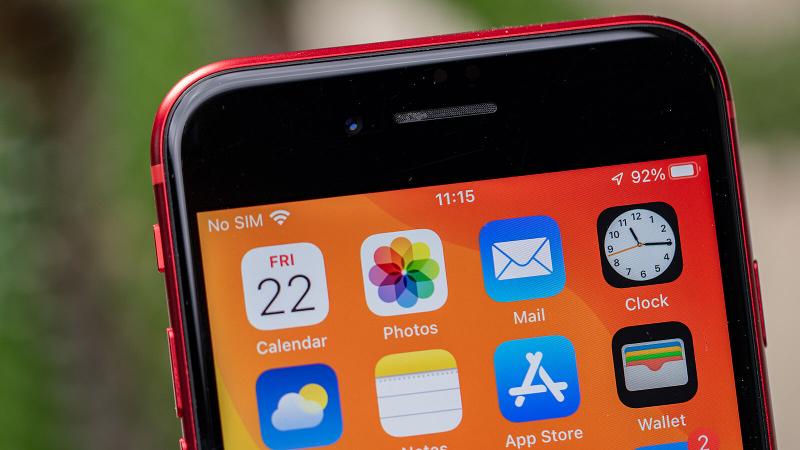
That means you still get the Home Button below the screen, and no notch above it, but it equally means you’ll have to live with a huge black bezel above and below said screen. There are no other phones on the market that look like this, and I don’t mean that as a compliment.
Still, there are upsides to the design. For one, it’s small – the SE is just 5.45in tall, and weighs a mere 144g. It’s compact, comfortable, and easy to hold and use with one hand. Still, it’s worth noting that it isn’t Apple’s smallest phone – both the iPhone 12 Mini and 13 Mini are smaller and lighter, despite packing larger displays, so those are worth looking at if size is your main concern.
One possible reason to prefer the SE is that with its older aesthetic comes the rounded edges Apple used to prefer, since replaced on its other phones by square edges that look slick, but are arguably a little less comfortable to hold. Like those other iPhones though, the SE is still lacking a headphone jack.
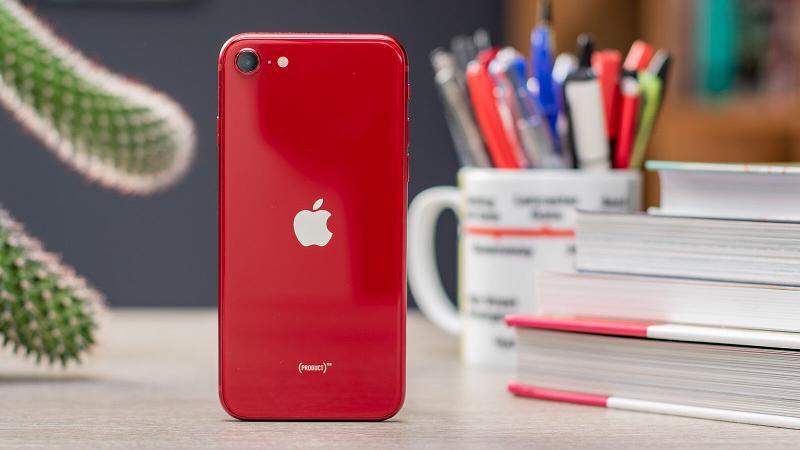
Although similarly priced Android phones will tend to look a lot more modern than the iPhone SE, it’s fair to say that Apple does have the edge in build quality. Available in black, white, or red the new SE 2022 is built out of aluminium and glass – no plastic here – and boasts an IP67 rating for dust and water-resistance.
Display and audio
- Tiny 4.7in display
- Low resolution, LCD, and 60Hz refresh rate
- Stereo speakers
If the re-used design holds back the iPhone SE, that’s nowhere more true than when it comes to the display.
This is one of the worst displays in any modern smartphone: it’s tiny, at 4.7in, it uses older LCD tech, rather than a superior OLED panel, it’s low resolution – not even Full HD, it’s dim and thus hard to use in bright sunlight, and it caps at a 60Hz refresh rate.
You could spend half as much and still find an Android phone that beats the SE on just about every one of those specs.
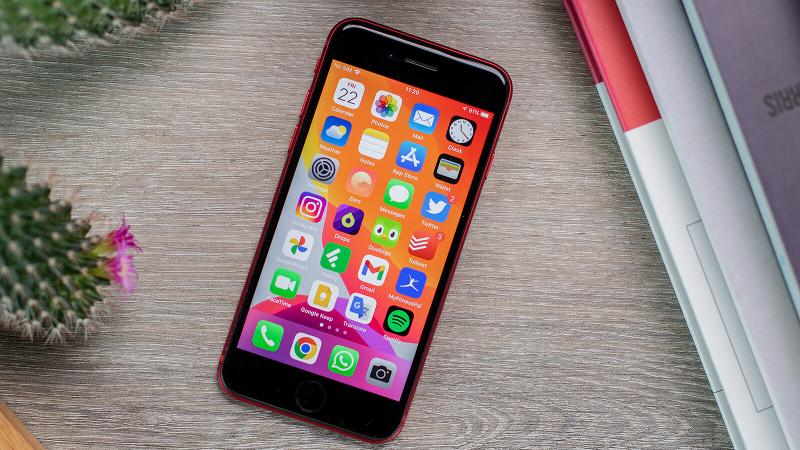
Ultimately though, it’s the screen size that really holds the SE back. Yes, it’s part of what keeps the phone so small and that might appeal to some, but thanks to a modern design Apple’s 12 Mini and 13 Mini offer much more screen space with 5.4in panels, while staying smaller overall.
The effect is practical, as well as aesthetic – the SE can barely fit modern apps on its screen. Some Instagram posts can’t display in their entirety, cookie pop-ups block even more of websites than they’re designed to, and you better hope you don’t need to type anything – the keyboard takes up half the screen, frequently blocking the text entry fields you’re trying to use.
The small screen is also a knock against the common argument that the SE is a great phone for older users, who may be reluctant to learn a new swipe-based interface. After all, a small screen means smaller text (and an even more cramped display if you opt to increase text size) making this a questionable choice for anyone with visual accessibility needs.
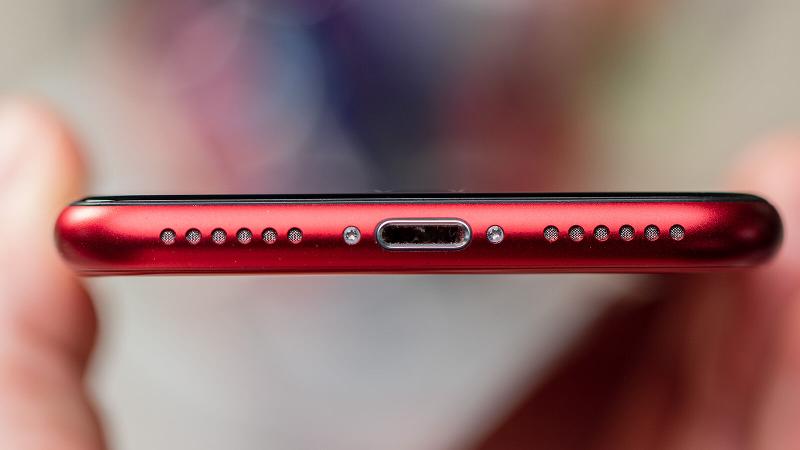
At least audio fares better. Apple has included stereo speakers here – a relative oddity at this price – and they’re loud and crisp, especially considering the phone’s size. You probably won’t buy the SE just for its speakers, but still – they are good.
Specs and performance
- Apple’s latest A15 Bionic chip
- Mostly smooth performance
- 5G connectivity
Now we’re getting to the good stuff. The main way that the iPhone SE stands out from the mid-range competition is that it offers the absolute fastest chip you’ll find in any phone right now.
Apple has included its A15 Bionic chip here – the same chipset you’ll find across the iPhone 13 range, and according to rumour, a chip it will even use again for the iPhone 14.
That predictably means the iPhone SE is powerful, and genuinely approaching flagship level – only held back by lower levels of RAM included here.
The phone flies on benchmarks, though surprisingly I found it struggled occasionally in real-world use, with apps dropping out of memory sooner than I’d expect and even some stutter and lag – more on that when I talk about software below.
I do wonder whether most people the SE appeals to will need this much power – and more importantly, whether that money could be better spent on a modern design – but I can’t really argue with the results.
The biggest upgrade here relative to the 2020 SE is that the A15 also brings with it support for 5G networking, which if nothing else is important for future-proofing the phone – though if you’re in the US note that unlike many other 5G phones, this doesn’t support mmWave, so won’t hit the fastest 5G speeds.
Still, 5G support gives the SE a crucial edge over the iPhone 11, which otherwise might be a tempting upgrade at only $70/£70/€90 more.
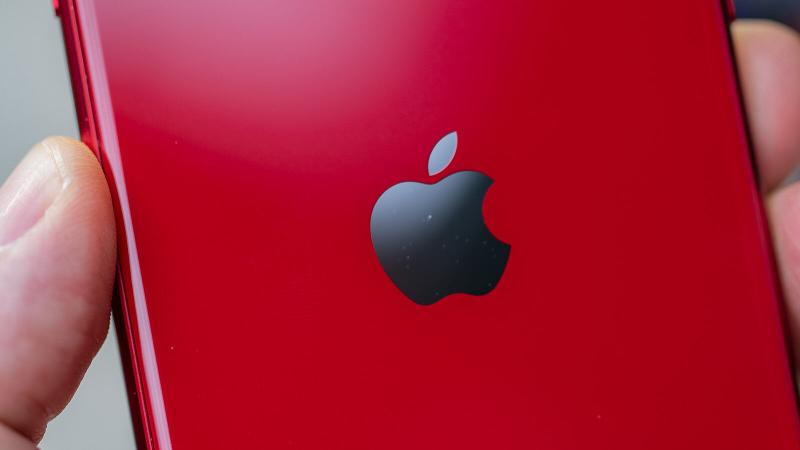
In terms of other networking, you’ll find Wi-Fi 6 and Bluetooth 5.0 (neither are the absolute latest standards, but are close enough) along with NFC for Apple Pay.
Battery life and charging
- Decent battery life
- Average wired charging (charger not included)
- Wireless charging support
Small phones mean small batteries, and just two years ago I listed poor battery life as one of my chief criticisms of the 2020 iPhone SE.
To Apple’s credit, a lot seems to have changed in those two years. The company officially lists a two-hour improvement in battery life for the SE, but in my experience the upgrade is more substantial. The last model barely lasted a day, but this year’s iteration will last through one day and even make it to the end of a second if you’re a light user.
That’s important because charging is less impressive. Apple lists support for up to 20W charging speeds over a wired Lightning connection, but remember that the company no longer ships a charger with its phones.
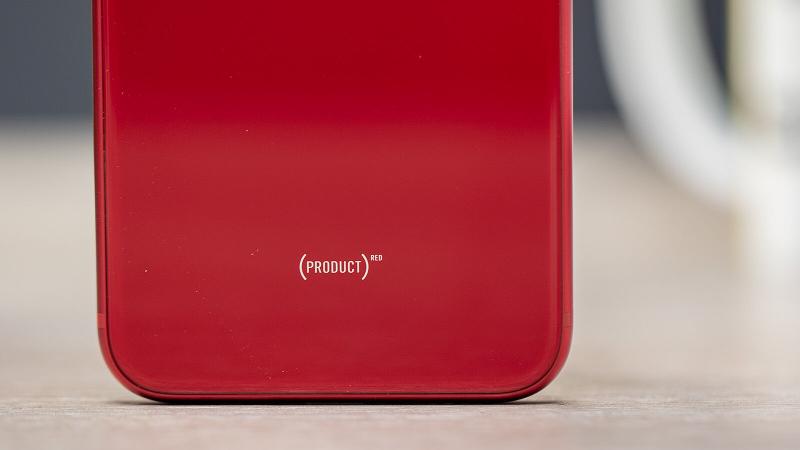
In my testing using a third-party charger the iPhone SE was able to charge up to 32% in 15 minutes, and 61% in half an hour. That’s faster than Apple’s 50% promise to be fair, but still slower than most of the competition, and will probably lend itself to charging the phone overnight.
The secret weapon here is support for wireless charging. That remains almost entirely unheard of at this price, and along with the A15, this is the iPhone’s main advantage over its Android rivals. There’s no MagSafe support though, so this still isn’t up there with Apple’s latest flagship charging options.
Cameras and video
- 12Mp rear camera
- 7Mp selfie camera
- No night mode
There are good and bad elements to the iPhone SE’s camera setup, but it all boils down to this: if you’re happy with a single camera lens that can take good shots in daytime, it will suffice. But if you want multiple lenses to choose from, or reliable night time photography, it won’t deliver.
Apple has included only a single rear camera here, a 12Mp, f/1.8 that is (in terms of hardware) identical to the 2020 model. There’s no ultrawide or telephoto option, but in fairness, most mid-range phones offer underwhelming secondary lenses, and I’ve long been an advocate for affordable phones focussing their efforts on strong primary cameras as Apple has done here.
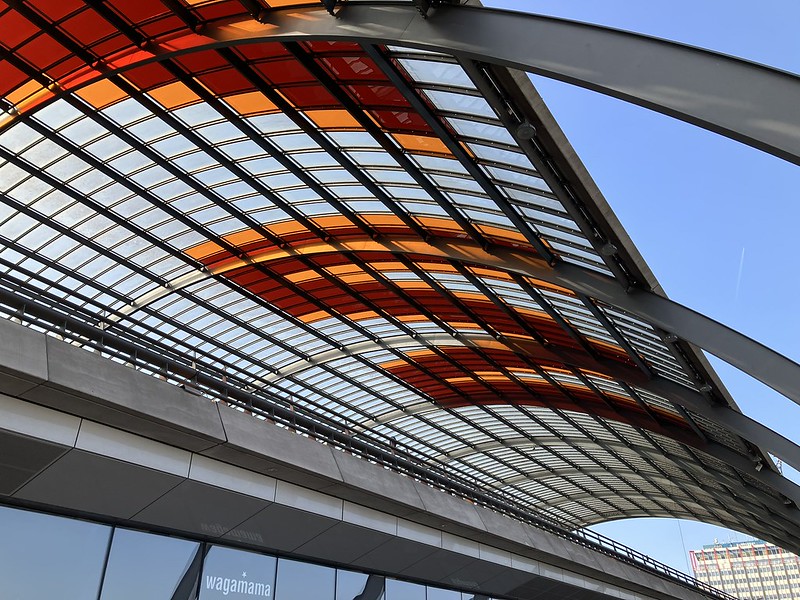
The camera upgrades here come courtesy of the A15 Bionic chip, with smartphone photography now increasingly reliant on computational factors. The problem is that Apple has decided to artificially limit the A15’s functionality in this phone, most notably in entirely omitting a night mode option, even though there’s no obvious technical reason it couldn’t be supported here.
Still, take the iPhone SE out in the daytime and you’re unlikely to be disappointed. Photos are bright, crisp, and detailed, with the more muted and true-to-life colour palette that iPhones are currently best known for – though admittedly the limited dynamic range holds it back somewhat.
It’s a good camera, and despite the ageing hardware, it’s comfortably in line with results from most other $400/£400 phones in daylight.
Even at night time, the SE isn’t awful. I’ve taken a couple of lowlight shots that I’m mostly happy with, and it’s clearly helped by the inclusion of optical image stabilisation, which is rare at this price.
Still, it’s hard to deny that most Android rivals have surpassed this level, especially when it comes to dynamic range and managing light sources, with the iPhone tending to blow out every light in a night time shot.
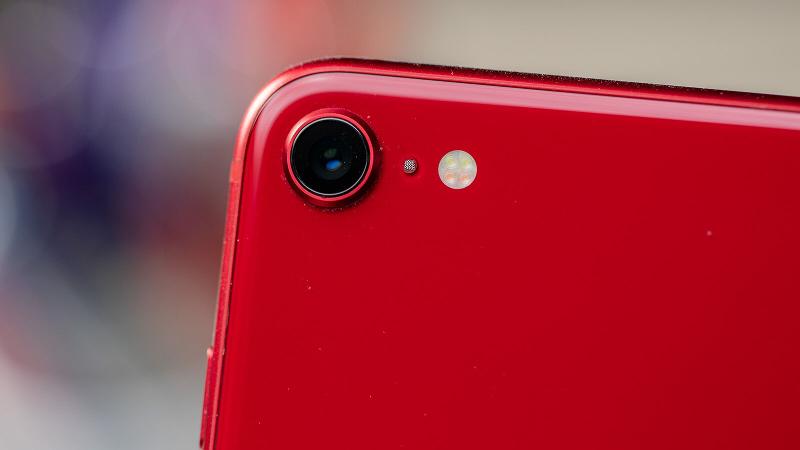
On the front, there’s a single selfie camera – a 7Mp shooter at an aperture of f/2.2. Again, this isn’t a camera to rely on at night, but there’s not much to complain about in selfies otherwise. There may be no night mode, but there is a portrait option, and this delivers well with the exception of a few stray hairs tending to be blurred along with the background.
Like most iPhones this is also a capable video device. It can record at up to [email protected], with impressive stabilisation and strong quality. There is another omission here though, with the Cinematic Mode that debuted on the iPhone 13 – allowing video with varying depth of field and blur effects – not found at all here.
Software and updates
- Ships with iOS 15
- Likely to receive years of software support
- Some performance problems stutters
Software is another strength. The iPhone SE ships with iOS 15, the latest version of Apple’s mobile operating system.
It’s likely to be supported for years to come too – even the original iPhone SE, which launched back in 2016, can still update to iOS 15. If this model sees similar support, it could be updated not only to iOS 16 later this year, but all the way through to iOS 21 six years from now.
No Android phone can rival that longevity, though in fairness they’re catching up – Google tends to support its mid-range Pixel a-series phones for several years, and Samsung has promised at least four Android version updates for its iPhone SE competitor, the Galaxy A53.
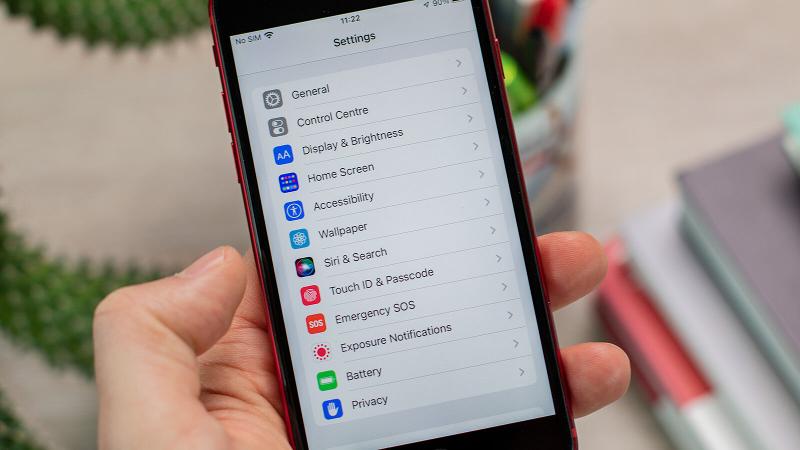
In any case, the software may be decisive for other reasons – we all know that most phone users stick to the system they know. That’s especially true here, where part of the appeal for some will be the inclusion of the Home Button, with button-based navigation controls at a time when other iPhones are all about swiping.
The Home Button also brings with it Touch ID, the security method used here for everything from opening your phone to using Apple Pay. This is certainly welcome and sorely missed on the more expensive iPhones – though, of course, the trade-off is that there’s no Face ID option here at all.
Otherwise, iOS 15 is about what you’d expect, though nothing here has changed too significantly from older versions. Notifications still feel clunky compared to Android, and the lack of an always-on display option disappoints, but Apple’s strengths – simplicity and a strong aesthetic – still shine through.
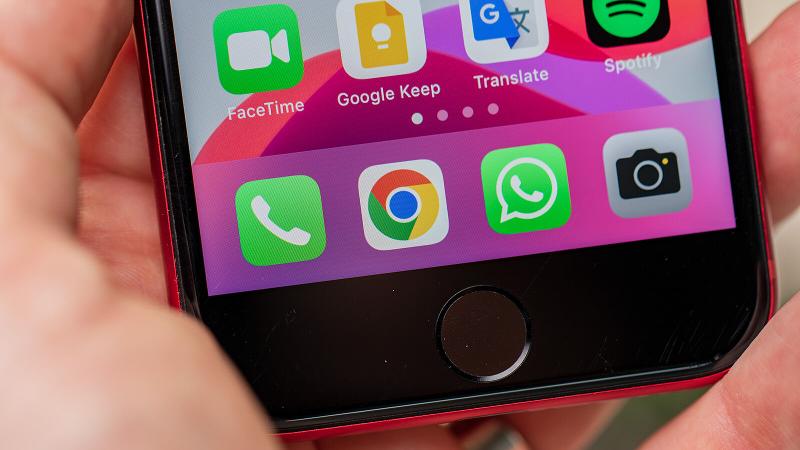
Strangely though, I have had software problems with my SE. Several apps have frequently stuttered, frozen, or crashed in my time with the phone, and one persistent bug sees the phone display orient itself upside down when the phone unlocks – and stay that way for a good ten seconds before correcting itself.
These aren’t issues I’ve found on my iPhone 12, also updated to iOS 15, so I can’t help but assume they’re optimisation problems tied to the SE specifically.
Unfortunately, if that’s the case the problem is liable to get worse, not better, as app developers will only be more inclined going…
